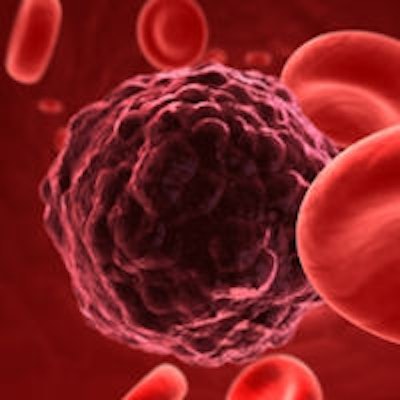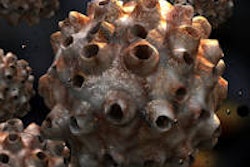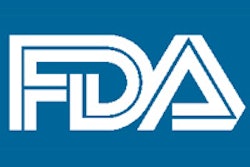
Although it is rare for men to contract oral oncologic human papillomavirus (HPV) infections, single men and smokers face higher risks of developing HPV-driven oropharyngeal cancer, according to a new study in Lancet (July 2, 2013).
Bisexual men and college-educated men also showed an increased risk of acquiring oral HPV infections, according to the study -- largest prospective study to examine the natural history of oral HPV infection.
HPV16 is associated with the growing increase of oropharyngeal cancer in the world, most notably in the U.S., Sweden, and Australia, where it causes more than 50% of cases, noted the international team of researchers.
However, prevalent oral HPV16 infection is rare and occurs in only 1% of cancer-free people. In recent studies of oral HPV infections in the U.S., such infections occurred three times more in men than women, similar to the gender ratio for oropharyngeal cancer.
Persistent oral HPV16 infection might be a precursor to oropharyngeal cancer, similar to how persistent cervical HPV infections can lead to cervical cancer, the study authors noted.
For this study, the researchers analyzed the incidence and clearance of HPV infections of men living in Brazil, Mexico, and the U.S. beginning in 2005 who were HIV- negative, reported no history of anogenital cancer, and who were part of the HPV Infection in Men (HIM) cohort study.
A total of 1,626 men (499 from Brazil, 557 from Mexico, and 570 from the U.S.) provided oral rinse-and-gargle samples at two or more study visits and completed at least two weeks of follow-up. Of these, 161 (10%) completed two follow-up visits, 953 (59%) completed three visits, 485 (30%) completed four visits, and 27 (2%) completed five visits.
The men were similar to those in the full HIM study cohort (n = 4,072), including having various sociodemographic and behavioral characteristics. At the oral baseline visit, they ranged in age from 18 to 73 years, with a median age of 32 years.
Oral HPV16
During the first 12 months of follow-up, the researchers found that 4.4% of the men acquired an incident oral HPV infection, 1.7% acquired oncogenic HPV, 0.6% acquired HPV16, and 3.4% acquired nononcogenic HPV.
Oral HPV16 was the most frequently acquired oncogenic HPV genotype, followed by types 59 and 39, which were detected in 0.5% and 0.3% of the population, respectively.
All other oncogenic HPV types were acquired in the oral region in less than 0.1% of healthy men. HPV55 was the most common nononcogenic oral infection, which was acquired in 2.0% of the men. Of the 115 men with an incident oral HPV infection, 17 were co-infected with more than one type of HPV, and HPV16 was present in five of these co-infections.
The 12-month cumulative incidence of oral HPV acquisition was 7.0% (95% confidence interval [CI]: 5.8-8.4); for oncogenic HPV types, it was 3.1% (95% CI: 2.4-4.2).
The researchers noted that most incident oral HPV infections cleared within one year.
The median duration of infections was similar for any oral oncogenic HPV infection and for HPV16 infections. Furthermore, eight of the 18 incident oral HPV16 infections persisted for two or more study visits; infections that occurred for the first time at the final study visit were excluded.
The risk of acquiring oncogenic oral HPV or any type of oral HPV was similar across age groups. Within the first 12 months of follow-up, the risk of acquiring any oral HPV was highest in men ages 31 to 50 years; however, this pattern did not persist throughout the follow-up period.
Marriage makes a difference
Men who were living in Mexico had significantly higher rates of acquiring new oral HPV infections than those who were living in the U.S. The rates were also significantly higher for the men who were single, divorced, separated, or widowed than in those who were married or cohabiting.
However, men who had had 20 or more sexual partners did not have a significantly increased risk of acquiring any oral HPV infections, the study authors noted.
"Marital status seems to be more predictive of oral HPV acquisition than does lifetime number of sexual partners," they wrote.
Interestingly, men with college educations had higher rates of acquiring new oral HPV infections compared with those who didn't attend college.
The researchers also found that oral sex and alcohol consumption were not significantly associated with oral HPV infections.
Impact of cigarette smoking
Although epidemiological data suggest that tobacco use is the main cause of head and neck cancers overall, it is not a strong risk factor for HPV-driven oropharyngeal cancer, the researchers said.
However, the study found that cigarette smoking was significantly associated with acquisition of oral HPV in healthy men. And the risk of acquiring an oncogenic oral HPV infection was nearly three times higher in current smokers and more than two times higher in former smokers than in those who had never smoked.
Furthermore, in the oral region, vaccine-preventable oral HPV types that are associated with oropharyngeal cancer (HPV16 and HPV18) represented 17% of newly acquired oral HPV infections in men without cancer, the researchers noted.
"Our findings show that acquisition of an oral oncogenic HPV infection in healthy men is a rare event compared with genital and, to a lesser extent, anal HPV infection, and that incidence is fairly stable across countries and age groups," they wrote.
These findings suggest that marital status and sexual orientation could reflect a participant's likelihood of engaging in risky sexual behaviors and partnerships, or differences in a participant's sexual network, "and that these characteristics might be more predictive of risk than lifetime number of sexual partners," the researchers concluded.



















